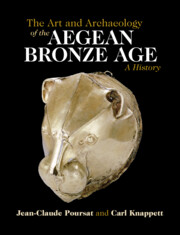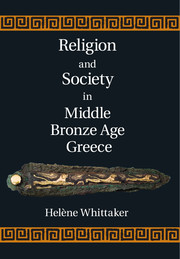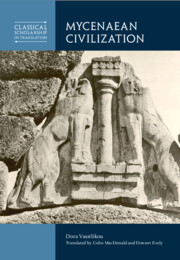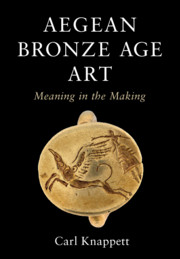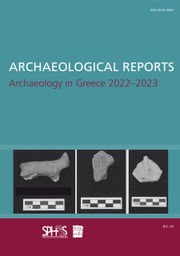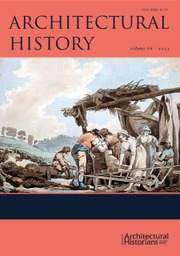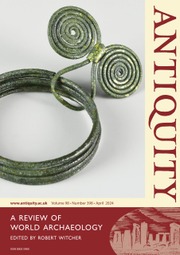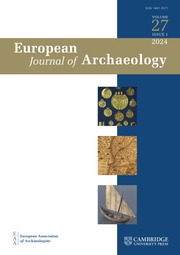The Art and Archaeology of the Aegean Bronze Age
The Art and Archaeology of the Aegean Bronze Age offers a comprehensive chronological and geographical overview of one of the most important civilizations in human history. Jean-Claude Poursat's volume provides a clear path through the rich and varied art and archaeology of Aegean prehistory, from the Neolithic period down to the end of the Bronze Age. Charting the regional differences within the Aegean world, his study covers the full range of material evidence, including architecture, pottery, frescoes, metalwork, stone, and ivory, all lucidly arranged by chapter. With nearly 300 illustrations, this volume is one of the most lavishly illustrated treatments of the subject yet published. Suggestions for further reading provide an up-to-date entry point to the full richness of the subject. Originally published in French, and translated by the author's collaborator Carl Knappett, this edition makes Poursat's deep knowledge of the Aegean Bronze Age available to an English-language audience for the first time.
- The volume is fully comprehensive in terms of its chronological and geographical range
- This book is unique in its organized, chapter-by-chapter coverage of so many categories of material, from domestic and palatial buildings to funerary architecture, from everyday pottery to the finest metalwork
- The book has nearly 300 carefully curated images that illustrate the main points, combined with thorough referencing and further reading
Product details
September 2022Hardback
9781108471343
578 pages
286 × 223 × 32 mm
1.88kg
Available
Table of Contents
- Part I. Aegean Neolithic Art:
- 1. Artefacts and Contexts
- 2. Architectural beginnings
- 3. Pottery
- 4. Figurines and models
- 5. Other arts: ornaments, seals, and stone vases
- Part II. The Art of the Aegean Early Bronze Age:
- 6. Artefacts and Contexts
- 7. Architecture
- 8. Early Bronze Age Aegean glyptic
- 9. Sculpture
- 10. Stone vases, metalware, miscellaneous
- 11. EBA pottery in the Aegean
- Part III. Aegean Art in the Cretan First Palace Period:
- 12. Artworks in context: the historical framework
- 13. Minoan architecture in the First Palace Period
- 14. Minoan glyptic in the Protopalatial period
- 15. Other Minoan relief arts: stone vases, jewelry, minor arts
- 16. Artworks in the round
- 17. Minoan pottery
- 18. Mainland Greece and the islands in the First Palace Period
- Part IV. Aegean Art in the Second Palace Period: Crete and the Aegean Islands:
- 19. Artworks in context : the historical framework
- 20. Aegean architecture in the Second Palace period
- 21. Aegean wall painting
- 22. Minoan glyptic
- 23. Artworks in the round: figures, figurines, and zoomorphic vases
- 24. Other artworks (stone, faience, ivory, metal
- textile)
- 25. Pottery production
- Part V. Aegean Art in the Cretan Second Palace Period: Mainland Greece:
- 26. Artworks in context: the historical framework
- 27. Funerary architecture
- 28. Metalwork
- 29. Creto-Mycenaean glyptic
- 30. Other Mycenaean relief arts: wood, bone, ivory, stone and faience
- 31. Mycenaean pottery of LH I-IIA
- 32. General remarks: Aegean art during the Cretan Second Palace period
- Part VI. Aegean Art in the Final Palatial Period of Knossos:
- 33. Artworks in context: the historical framework
- 34. Architecture
- 35. The frescoes
- 36. Metalwork, jewelry and various ornaments
- 37. Creto-Mycenaean glyptic in LM II/LH IIB–IIIA1
- 38. Other relief arts: ivory and stone
- 39. Artworks in the round: figurines and zoomorphic vessels
- 40. LM II/LH II-IIIA1 pottery
- Part VII. Aegean Art of the Mainland Mycenaean Palatial Period:
- 41. Artworks in context: the historical framework
- 42. Architecture
- 43. Mycenaean painting
- 44. The end of Aegean glyptic
- 45. Mycenaean ivories of LH IIIA2-B
- 46. Other relief arts: goldwork, glass, faience, stone
- 47. Mycenaean art and 'international art'
- Artworks in the round: figurines, figures, anthropomorphic and zoomorphic vases
- 49. Pottery production: vases and sarcophagi
- Part VIII. Aegean Art at the End of the Bronze Age:
- 50. Artworks in context: the historical framework
- 51. Architecture at the end of the Bronze Age
- 52. Figures, figurines, anthropomorphic and zoomorphic vases
- 53. Jewelry and metalwork
- 54. Pictorial art and vase painting
- 55. Mycenaean art and its legacy
- Afterword. Aegean art through forgers' eyes
- 56. Fakes and dubitanda.

